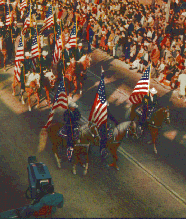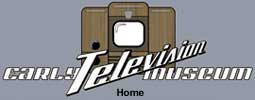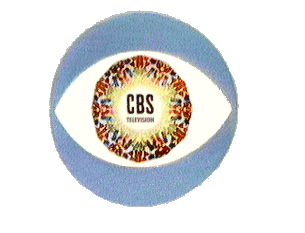xxxxxxxxxxxxxxxxxxxxxxx xxxxxxxxxxxxxxxxxxxxxxxxxxxxxx xxxxxxxxxxxxxxxxxxxxxxxx xxxxxxxxxxxxxxxxxxxxxxxxxxxxx xxxxxxxxxxxxxxxxxxxxxxxxxxxxxx xxxxxxxxxxxxxxxxxxxxx xxxxxxxxxxxxxxx xxxxxxxxxxxxxxxxxx xxxxxxxxxxxxxxxxxxxxxxxxxxxxxxxxxxxxxxxxxxx xxxxxxxxxxxxxxxxxxxxxxxxxxxxxx xxxxxxxxxxxxxxxxxxxxxxxx xxxxxxxxxxxxxxxxxxxxxxxxxxxxx xxxxxxxxxxxxxxxxxxxxxxxxxxxxxx xxxxxxxxxxxxxxxxxxxxx xxxxxxxxxxxxxxx xxxxxxxxxxxxxxxxxx xxxxxxxxxxxxxxxxxxxxxxxxxxxxxxxxxxxxxxxxxxx xxxxxxxxxxxxxxxxxxxxxxxxxxxxxx xxxxxxxxxxxxxxxxxxxxxxxx xxxxxxxxxxxxxxxxxxxxxxxxxxxxx xxxxxxxxxxxxxxxxxxxxxxxxxxxxxx xxxxxxxxxxxxxxxxxxxxx xxxxxxxxxxxxxxx xxxxxxxxxxxxxxxxxx xxxxxxxxxxxxxxxxxxxxxxxxxxxxxxxxxxxxxxxxxxx xxxxxxxxxxxxxxxxxxxxxxxxxxxxxx xxxxxxxxxxxxxxxxxxxxxxxx xxxxxxxxxxxxxxxxxxxxxxxxxxxxx xxxxxxxxxxxxxxxxxxxxxxxxxxxxxx xxxxxxxxxxxxxxxxxxxxx xxxxxxxxxxxxxxx xxxxxxxxxxxxxxxxxx xxxxxxxxxxxxxxxxxxxxxxxxxxxxxxxxxxxxxxxxxxx xxxxxxxxxxxxxxxxxxxxxxxxxxxxxx xxxxxxxxxxxxxxxxxxxxxxxx xxxxxxxxxxxxxxxxxxxxxxxxxxxxx xxxxxxxxxxxxxxxxxxxxxxxxxxxxxx xxxxxxxxxxxxxxxxxxxxx xxxxxxxxxxxxxxx xxxxxxxxxxxxxxxxxx xxxxxxxxxxxxxxxxxxxxxxxxxxxxxxxxxxxxxxxxxxx xxxxxxxxxxxxxxxxxxxxxxxxxxxxxx xxxxxxxxxxxxxxxxxxxxxxxx xxxxxxxxxxxxxxxxxxxxxxxxxxxxx xxxxxxxxxxxxxxxxxxxxxxxxxxxxxx xxxxxxxxxxxxxxxxxxxxx xxxxxxxxxxxxxxx xxxxxxxxxxxxxxxxxx xxxxxxxxxxxxxxxxxxxxxxxxxxxxxxxxxxxxxxxxxxx xxxxxxxxxxxxxxxxxxxxxxxxxxxxxx xxxxxxxxxxxxxxxxxxxxxxxx xxxxxxxxxxxxxxxxxxxxxxxxxxxxx xxxxxxxxxxxxxxxxxxxxxxxxxxxxxx xxxxxxxxxxxxxxxxxxxxx xxxxxxxxxxxxxxx xxxxxxxxxxxxxxxxxx xxxxxxxxxxxxxxxxxxxxxxxxxxxxxxxxxxxxxxxxxxx xxxxxxxxxxxxxxxxxxxxxxxxxxxxxx xxxxxxxxxxxxxxxxxxxxxxxx xxxxxxxxxxxxxxxxxxxxxxxxxxxxx xxxxxxxxxxxxxxxxxxxxxxxxxxxxxx xxxxxxxxxxxxxxxxxxxxx xxxxxxxxxxxxxxx xxxxxxxxxxxxxxxxxx xxxxxxxxxxxxxxxxxxxxxxxxxxxxxxxxxxxxxxxxxxx xxxxxxxxxxxxxxxxxxxxxxxxxxxxxx xxxxxxxxxxxxxxxxxxxxxxxx xxxxxxxxxxxxxxxxxxxxxxxxxxxxx xxxxxxxxxxxxxxxxxxxxxxxxxxxxxx xxxxxxxxxxxxxxxxxxxxx xxxxxxxxxxxxxxx xxxxxxxxxxxxxxxxxx xxxxxxxxxxxxxxxxxxxxxxxxxxxxxxxxxxxxxxxxxxx xxxxxxxxxxxxxxxxxxxxxxxxxxxxxx xxxxxxxxxxxxxxxxxxxxxxxx xxxxxxxxxxxxxxxxxxxxxxxxxxxxx xxxxxxxxxxxxxxxxxxxxxxxxxxxxxx xxxxxxxxxxxxxxxxxxxxx xxxxxxxxxxxxxxx xxxxxxxxxxxxxxxxxx xxxxxxxxxxxxxxxxxxxxxxxxxxxxxxxxxxxxxxxxxxx xxxxxxxxxxxxxxxxxxxxxxxxxxxxxx xxxxxxxxxxxxxxxxxxxxxxxx xxxxxxxxxxxxxxxxxxxxxxxxxxxxx xxxxxxxxxxxxxxxxxxxxxxxxxxxxxx xxxxxxxxxxxxxxxxxxxxx xxxxxxxxxxxxxxx xxxxxxxxxxxxxxxxxx xxxxxxxxxxxxxxxxxxxxxxxxxxxxxxxxxxxxxxxxxxx xxxxxxxxxxxxxxxxxxxxxxxxxxxxxx xxxxxxxxxxxxxxxxxxxxxxxx xxxxxxxxxxxxxxxxxxxxxxxxxxxxx xxxxxxxxxxxxxxxxxxxxxxxxxxxxxx xxxxxxxxxxxxxxxxxxxxx xxxxxxxxxxxxxxx xxxxxxxxxxxxxxxxxx xxxxxxxxxxxxxxxxxxxxxxxxxxxxxxxxxxxxxxxxxxx xxxxxxxxxxxxxxxxxxxxxxxxxxxxxx xxxxxxxxxxxxxxxxxxxxxxxx xxxxxxxxxxxxxxxxxxxxxxxxxxxxx xxxxxxxxxxxxxxxxxxxxxxxxxxxxxx xxxxxxxxxxxxxxxxxxxxx xxxxxxxxxxxxxxx xxxxxxxxxxxxxxxxxx xxxxxxxxxxxxxxxxxxxxxxxxxxxxxxxxxxxxxxxxxxx xxxxxxxxxxxxxxxxxxxxxxxxxxxxxx xxxxxxxxxxxxxxxxxxxxxxxx xxxxxxxxxxxxxxxxxxxxxxxxxxxxx xxxxxxxxxxxxxxxxxxxxxxxxxxxxxx xxxxxxxxxxxxxxxxxxxxx xxxxxxxxxxxxxxx xxxxxxxxxxxxxxxxxx xxxxxxxxxxxxxxxxxxxxxxxxxxxxxxxxxxxxxxxxxxx xxxxxxxxxxxxxxxxxxxxxxxxxxxxxx xxxxxxxxxxxxxxxxxxxxxxxx xxxxxxxxxxxxxxxxxxxxxxxxxxxxx xxxxxxxxxxxxxxxxxxxxxxxxxxxxxx xxxxxxxxxxxxxxxxxxxxx xxxxxxxxxxxxxxx xxxxxxxxxxxxxxxxxx xxxxxxxxxxxxxxxxxxxxxxxxxxxxxxxxxxxxxxxxxxx xxxxxxxxxxxxxxxxxxxxxxxxxxxxxx xxxxxxxxxxxxxxxxxxxxxxxx xxxxxxxxxxxxxxxxxxxxxxxxxxxxx xxxxxxxxxxxxxxxxxxxxxxxxxxxxxx xxxxxxxxxxxxxxxxxxxxx xxxxxxxxxxxxxxx xxxxxxxxxxxxxxxxxx xxxxxxxxxxxxxxxxxxx Ed Reitan's Color Television History Early Color Television Studio Facilities The CBS Color Television Logo, rarely seen between 1954 and 1965 The CBS "Blood-Shot" Eye Color Television Logo is a video capture from an original "low-band color" standard 2-inch videotape of a CBS color show. Strangely, the tape was recorded by NBC as an aircheck of CBS's January 3, 1965 repeat showing of the 1959 Special, "Another Evening with Fred Astaire". (The trilogy of Astaire 1958, 1959, and 1960 NBC Specials were shown by CBS on the last Sunday of 1964 and the first two Sundays of 1965) In 2001, Steven Paley described this as one of the only times that NBC originated a CBS network show: CBS could not play this earliest color recording because of its unique NBC proprietary format. So, NBC played the tape in its shop and sent it via the permanent New York NBC to CBS Telco link. It then went to the CBS network. CBS inserted the above color eye using its (infrequently used) original TK-26 color slide/film camera. The poor horizontal linearity of the eye indicates a poorly maintained TK-26. CBS also inserted promo slides for an upcomming colorcast of "The Wizard of Oz".
This page describes the initial capabilities of the networks and major independents to colorcast live shows. For a surprising long time, there were few color facilities. In 1954 and 1955, NBC and CBS had only one color studio each on the East and West Coasts - ABC would not have a live color stage until ten years later in 1965. The unavailability of color studios led to early color programming practice of the occasional color special or colorizing a single episode of a regular series. In several instances, local affiliates had better color facilities than the networks. NBC Color StudiosWardman Park Studio (1949)
Washington, D.C., Wardman Park Hotel (now Sheraton-Washington) used September, 1949 - December, 1950. Live Cameras (2), Slide Scanner, 16mm Film Scanner Used for demonstrations during the FCC Hearings on color television. For comparative purposes, CBS brought their cameras into this cramped studio for side-by-side operation with the RCA system. Rockefeller Center Studio 3H (1951) Mobile Unit (1951)
Live Cameras (1, later 2) The same motor van was used that had housed the first mobile pre-war black and white iconoscope cameras in 1938. On May 21, 1951 a live color pickup first originated from this Mobile Unit. A single large "coffin" color camera was used at Pallisades Park. It was similar to the original studio 3H cameras. [pix] In later photos, this early Mobile Unit van is shown with what appears to be a "Prototype TK-40" camera (with sides tapering to a narrow front, but preceeding the types used at the Colonial Theater). Photos of this camera in front of the truck show the body of this later camera to be painted either silver or white. [pix] Colonial Theater (1953)
New York City, Broadway and 62nd St., opened 1953 Live Cameras (4), Slide Scanner, 16mm Film Scanner The first NBC network Colorcasts first came from this studio in 1953 . This included the October 31, 1953 opera "Carmen", and the first commercial (sponsored) color program, the November 22, 1953 "Colgate Comedy Hour" with Donald O'Connor. "New" Mobile Unit (1954)

Brooklyn 1 (Fall 1954)
Opened Fall, 1954, [Brooklyn 2 opened Fall 1956] The first colorcast from Brooklyn 1 was "Satins and Spurs", the first Spectacular, produced by Max Liebman and starring Betty Hutton on September 12, 1954. This studio was the former Warner Brothers motion picture facility. The "Esther Williams Aqua Spectacle", the first water show, also came from Brooklyn 1 on October 29, 1956. A TK-41 camera on a crane arm pivoted from the center of a circular pool to follow the swimming performers. Burbank Studio 2 (Spring 1955) Rockefeller Center Studio 3K (Fall 1955)
New York City This Radio City color studio first became operatational for the September 12, 1955 conversion of "Howdy Doody" to color . The show was presented from 5:30 to 6 p.m., New York time, Monday through Friday. The newly named Studio 3K was created by remodeling historical Studio 3H to a larger size. In a phone conversation on May 27, 2002, Heino Ripp (NBC-retired) recalled the controversy of moving several structural building beams. Ziegfeld Theater (Fall 1956)
New York, Manhattan, located on the southwest corner of 54th Street and 6th Avenue (or the Avenue of the Americas, as it is also known) Opened Sept. 15, 1956 with season premier of "The Perry Como Show". [Thanks to Steven Paley for correcting the address - EHR] Chicago (1956) Washington, D.C. (1958)
WRC-TV Dedicated May 22, 1958 by President Dwight D. Eisenhower, General David Sarnoff, and Robert Sarnoff. The colorcast of the dedication survives as the earliest known color video tape recording. Live Cameras (2) Thereafter, the long-running "Meet the Press with Lawrence Spivak" originated in color from this studio to the NBC network.
CBS Color StudiosNew York City (1941)
The Orthicon live-pickup camera was used for the initial pre-war experimental colorcasts shown in the Sept. 22, 1941 "Life" magazine. An Image Dissector was used for film pickup. Washington, D.C. (1949-50) Studio 57 (1950-51)
New York, 1280 Fifth Avenue at East 109th Street. Used for early CBS Field Sequential Color System experimental and commercial (July - October, 1951) Colorcasts. Field Sequential Live I.O. Camera (2) and Direct I.O. Film/Slide Pickup (Modified TK-30As) [5] Studio 71 (1953) (Radio Studio 1) Studio 72 (1954)
New York, Broadway and 81st St. Theater purchased in early 1954. Two Control Rooms (Color and B&W with TK-11's) Live Cameras (4 - TK-40A's); Slide, 35mm and 16mm Film Scanners (DuMont 16mm and Philco 35mm). The studio had side by side Monochrome and Color control rooms. Later, 3-vidicon RCA TK-26 Film/Slide chains replaced film scanners in this studio. This was the first major CBS NTSC color studio. CBS featured a rotating schedule of one-time New York program colorizations including the "Ed Sullivan Show" from Studio 72. The December 25, 1958 "Nutcracker" on "Playhouse 90", the first color video-taped CBS show, originated from this studio. As colorcasting was progressively slowed on CBS during the late 1950's, only the monochrome equipment in this studio was used for origination of a number of black and white telecasts including "The Verdict Is Yours". Harold Deppe worked for CBS at Studio 72. He reported in March, 1997 that between the infrequent CBS colorcasts, none of the color equipment was even regularly powered - so much equipment maintenance had to be done when a rare colorcast was scheduled. It was not known by either Deppe or CBS's Richard O'Brien when Studio 72 was retired. Stephen Paley says he saw Studio 72 still in operation in 1964. The TK-40A color cameras had been converted to the CBS "Video Scene" process whereby they were used as black and white cameras for matte shots. Eventually, only the TK-26 Film Chains from Studio 72 were moved to the Broadcast Center on West 57th Street in late 1964. Thus, the only CBS East Coast color capability from late 1964 until the conversion of the Sullivan Theater in late 1965 was from film and video tape. Studio 43C (1954)
Studio 41C (1956) Television City Hollywood (Beverly and Fairfax. L.A.) opened September 7, 1954 with "Life with Father" colorcast Two Control Rooms (Color and B&W) Live Cameras (4) A second color control room with TK-40A camera controls was added behind the audience in addition to the existing Studio 43 B&W control room ($1M, BT 4/12/54). Cables for the color cameras were permanently installed from the Studio 43 color control room to the other four studios. The TK-40A cameras could then be moved to any of these other studios and patched back to the Studio 43 color control room [1]. A Philco Film Scanner was provided for 35mm motion picture film. This scanner experienced many problems with dirty optics[6]. A second studio, Studio 41, was converted in 1956 with TK-41's. Studios 31,33,41,43 (1964)
Television City Hollywood (Beverly and Fairfax) The Second Generation Installation . Starting in 1964 all Television City Studios were converted from Marconi and Pye 4 1/2-inch image orthicon monochrome cameras and the remaining TK-40 color cameras to Philips Norelco PC-60 and later PC-70 color cameras. CBS Television City used GE Film Chains (3V) during this era. Studio 50, Ed Sullivan Theater (1965) Broadcast Center on West 57th Street (1965)
Major Local Affiliates and Independents with Live Color CapabilityWKY-TV, Oklahoma City (April 8, 1954)
TK-40A (2), TK-4A slide, TK-26 film (fall, 1954) This was the first installation of color equipment at at a local affiliate. WBAP-TV, Fort Worth (May 15, 1954) WTMJ-TV, Milwaukee (July 18, 1954) WCCO-TV, Minneapolis (1954) WBEN, Buffalo (1954) KTLA, Hollywood (1954) KMTV, Omaha (September, 1955)
Red Skelton Color Studios
"Red-EO-Tape" Studios and Remote Color Vans (1961) Hollywood, Skelton Studios (former Chaplin Studio) on LaBrea, south of Hollywood Blvd. Skelton was infatuated with his appearance on color television, cajoled CBS to occasionally colorcast his "Red Skelton Show", and was the first to attempt to market the rental of three remote vans which had full live, film, and color video tape capability. RCA TK-41C and TK-26 cameras with 16mm and 35mm projectors were used with Ampex Color Video Tape Recorders. Although visionary, the venture was premature and when it failed, CBS bought Skelton Studios as part of renewing Skelton's contract. The mobile color camera vans were sold to KTLA. The Skelton cameras were eventually donated to California State University and later transferred to the UCLA Collection of Television Technology. Glenn-Armistead Mobile Color Units
ABC Color StudiosHollywood Palace (1965)
Hollywood, Vine St. North of Hollywood Blvd. TK-41C (4), initially, no film or slide capability. ABC's first Live Color Studio was in the Hollywood Palace Theater, starting in 1965. Remote Trucks were situated in the parking lot North of the studio. Cables were run into the theater to four TK-41C cameras for the production of the "Hollywood Palace", "Lawrence Welk", and later "King Sisters" shows. The mobile color trucks were leased from MGM, New York. There were no facilities for slide or motion picture film. After the first year using controls in the truck, a control room was constructed inside the theater. [6] Initial ABC colorcasts had started three years earlier from film, starting with a cartoon show, "The Jetsons", on September 23, 1962. Only a single RCA TK-26 Film Chain at Prospect, Hollywood was used to transmit these shows to network for 2 years . ABC Engineering, New York , did not believe in vectorscopes, so none were provided by ABC to Hollywood. Prospect and Talmadge (1966) 1313 Vine St. Studio (originally Mutual Radio Network Studio)
Hollywood, Vine Street at Fountain. ABC installed General Electric PE-250 Plumbicon Color Cameras, "which never worked correctly."
Notes[1] Conversation with Al Abramson, 7/5/96. Chief Engineer Howard Chin directly complained to Abramson re. the dirty optics, a recurring problem with the Philco scanner.
[2] Conversation with Don McCroskey, ex-ABC Hollywood Engineering Head, 7/7/96. Don visited the remote NBC color truck at the 1954 Rose Parade. [3] Conversation with Richard O'Brien, ex-CBS New York Engineering Head, July 7, 1996. I was evidently wrong with my memory of the story that the Ed Sullivan Theater had Marconi Color Cameras. Although CBS did use 4 1/2-inch orthicon Marconi B&W cameras, O'Brien did not remember any CBS use of Marconi color cameras. O'Brien mentioned he converted the Studio 57 Field Sequential camera during a follow-up conversation on August 18, 1996. [4] October 12, 1953 Broadcasting - Telecasting, p.35. In the Feb. 1, 1954 B-T (p72), General Electric announced a licensing agreement with CBS to manufacture the Chromacoder. They also announced that four units had been ordered by CBS (in the same issue RCA announced CBS had ordered 12 of its large cameras). In the March 1, 1954 B-T (p63), General Electric announced their Chromacoder System in Production at Syracuse. [5] "Color Television - U.S.A. Standard", Goldmark, Christensen and Reeves, Proceedings of the IRE, Vol.39, Number 10, October, 1951. [6] Conversation with Don McCroskey, ABC Hollywood Engineering, July 7, 1996 and August 18, 1996. [7] "101 Years of Television Technology", Richard O'Brien, Robert B. Monroe, SMPTE Journal, Vol. 85, Number 7, July, 1976
v1.0.2 10/31/97 The CBS "Blood-Shot" Eye Color Television Logo was provided by Don Kent from the UCLA Ampex AVR-1 Restoration VTR, maintained by KTLA. This page of Ed Reitan is a work in progress. |


